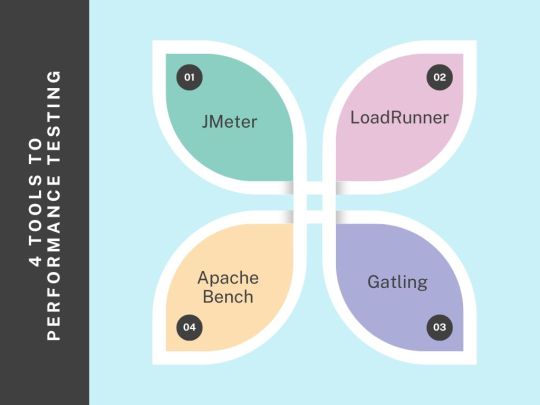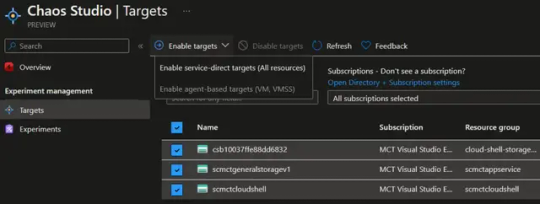#loadtester
Text
Top Load Tester - Digital
Bottle Testing's digital top load tester ensures precise top load testing for PET bottles, guaranteeing product integrity and safety.

1 note
·
View note
Text

Boost application reliability with top performance testing tools like JMeter, LoadRunner, Gatling, and Apache Bench, ensuring scalability, speed, and optimal user experience.
.
1 note
·
View note
Text
Top 10 Industry Leaders in Performance Testing Services

In the realm of software development, performance testing is indispensable for ensuring that applications operate efficiently under varying conditions. This type of testing helps identify bottlenecks, validate scalability, and ensure a seamless user experience. For businesses seeking the best in performance testing, India offers a range of top-notch service providers. Here’s a look at the top 10 companies in performance testing services, spotlighting those recognized as the 10 Best Performance Testing Service Provider Companies.
1. Vee Technologies
Leading the list of the 10 Best Performance Testing Service Provider Companies is Vee Technologies. Known for its exceptional performance testing capabilities, Vee Technologies provides comprehensive services designed to assess and enhance application performance. Their team of experts employs advanced tools and methodologies to simulate various load conditions and ensure that software systems meet high-performance standards. Their dedication to delivering reliable, scalable, and high-quality performance testing solutions makes them a top choice in the industry.
2. Tata Consultancy Services (TCS)
Tata Consultancy Services is renowned for its robust performance testing services. With a focus on optimizing software performance, TCS uses cutting-edge tools and techniques to identify and rectify performance issues. Their global reach and extensive experience make them a prominent player among the 10 Best Performance Testing Service Provider Companies.
3. Infosys
Infosys is a leading provider of performance testing services, known for its comprehensive approach and innovative solutions. Their team excels in performance assessment, ensuring that applications handle peak loads efficiently and maintain optimal functionality. Infosys’s expertise in performance testing is well-recognized in the industry.
4. Wipro
Wipro offers a range of performance testing services designed to meet the diverse needs of businesses. Their focus on rigorous testing and performance optimization helps ensure that applications perform seamlessly under various conditions. Wipro’s dedication to quality and reliability places them among the top performance testing providers.
5. HCL Technologies
HCL Technologies is a significant player in performance testing, offering services that focus on enhancing application performance and scalability. Their team utilizes advanced performance testing tools to deliver valuable insights and ensure that software meets performance expectations.
6. Capgemini
Capgemini’s performance testing services are known for their thoroughness and effectiveness. By employing innovative testing strategies, Capgemini helps businesses optimize application performance and achieve their performance goals. Their expertise and client-focused approach make them a leading provider in the performance testing domain.
7. Tech Mahindra
Tech Mahindra provides comprehensive performance testing services aimed at identifying and addressing performance issues. Their approach includes rigorous testing and analysis to ensure that applications perform efficiently under various scenarios. Tech Mahindra’s commitment to excellence is evident in their performance testing services.
8. Cognizant
Cognizant is renowned for its performance testing services, offering solutions that ensure software applications are capable of handling high loads and delivering a smooth user experience. Their expertise in performance testing makes them a reliable choice for businesses looking to enhance application performance.
9. Mindtree
Mindtree’s performance testing services focus on delivering accurate and actionable insights into application performance. Their thorough testing methodologies help identify potential issues and optimize performance, ensuring that applications function efficiently under various conditions.
10. L&T Technology Services
L&T Technology Services offers robust performance testing solutions designed to meet a range of business needs. Their approach involves detailed performance assessments and optimizations to ensure software applications deliver the best performance possible.
Conclusion
Selecting the right performance testing service provider is crucial for ensuring that applications perform optimally under varying conditions. The 10 Best Performance Testing Service Provider Companies listed above, including Vee Technologies, are distinguished by their expertise and commitment to delivering high-quality performance testing solutions. Their comprehensive testing methodologies and focus on quality assurance help businesses enhance their software applications and achieve superior performance. In a competitive landscape where performance is key, partnering with these top providers can make a significant difference in your software’s success and reliability.
0 notes
Text
Essential Skills for Testing Applications in Different Environments

Testing applications in different environments requires a diverse set of skills to ensure the software performs well under various conditions and configurations. Here are the essential skills needed for this task:
1. Understanding of Different Environments
Development, Staging, and Production: Knowledge of the differences between development, staging, and production environments, and the purpose of each.
Configuration Management: Understanding how to configure and manage different environments, including handling environment-specific settings and secrets.
2. Test Planning and Strategy
Test Plan Creation: Ability to create comprehensive test plans that cover different environments.
Environment-specific Test Cases: Designing test cases that take into account the specific characteristics and constraints of each environment.
3. Automation Skills
Automated Testing Tools: Proficiency with automated testing tools like Selenium, JUnit, TestNG, or Cypress.
Continuous Integration/Continuous Deployment (CI/CD): Experience with CI/CD tools like Jenkins, GitLab CI, or Travis CI to automate the testing process across different environments.
4. Configuration Management Tools
Infrastructure as Code (IaC): Familiarity with IaC tools like Terraform, Ansible, or CloudFormation to manage and configure environments consistently.
Containerization: Knowledge of Docker and Kubernetes for creating consistent and isolated testing environments.
5. Version Control Systems
Git: Proficiency in using Git for version control, including branching, merging, and handling environment-specific code changes.
6. Test Data Management
Data Masking and Anonymization: Skills in anonymizing sensitive data for testing purposes.
Synthetic Data Generation: Ability to create synthetic test data that mimics real-world scenarios.
7. Performance Testing
Load Testing: Experience with load testing tools like JMeter, LoadRunner, or Gatling to assess performance under different conditions.
Stress Testing: Ability to perform stress testing to determine the application's breaking point.
8. Security Testing
Vulnerability Scanning: Knowledge of tools like OWASP ZAP, Burp Suite, or Nessus for identifying security vulnerabilities in different environments.
Penetration Testing: Skills in conducting penetration tests to assess security risks.
9. Cross-Browser and Cross-Device Testing
Browser Testing: Proficiency with tools like BrowserStack or Sauce Labs for testing across different browsers.
Device Testing: Experience with testing on different devices and operating systems to ensure compatibility.
10. API Testing
API Testing Tools: Experience with tools like Postman, SoapUI, or RestAssured for testing APIs.
Contract Testing: Knowledge of contract testing frameworks like Pact to ensure consistent API behavior across environments.
11. Monitoring and Logging
Monitoring Tools: Familiarity with monitoring tools like Prometheus, Grafana, or New Relic to observe application performance and health in different environments.
Log Management: Skills in using log management tools like ELK Stack (Elasticsearch, Logstash, Kibana) or Splunk for troubleshooting and analysis.
12. Soft Skills
Attention to Detail: Meticulous attention to detail to identify environment-specific issues.
Problem-solving: Strong problem-solving skills to troubleshoot and resolve issues quickly.
Collaboration: Ability to work effectively with development, operations, and product teams to manage and troubleshoot environment-related issues.
Practical Steps for Testing in Different Environments
Environment Setup:
Define the infrastructure and configuration needed for each environment.
Use IaC tools to automate environment setup and teardown.
Configuration Management:
Manage environment-specific configurations and secrets securely.
Use tools like Consul or Vault for managing secrets.
Automate Testing:
Integrate automated tests into your CI/CD pipeline.
Ensure tests are run in all environments as part of the deployment process.
Test Data Management:
Use consistent and reliable test data across all environments.
Implement data seeding or generation scripts as part of your environment setup.
Performance and Security Testing:
Conduct regular performance and security tests in staging and production-like environments.
Monitor application performance and security continuously.
Sun Technologies has testers who have the above listed skills to ensure that applications are robust, secure, and performant across different environments, leading to higher quality software and better user experiences. Contact us to get a free assessment of CI/CD automation opportunity that you can activate using Sun Technologies’ Testing Center-of-Excellence (CoE).
#api#testingapplication#automation#ci/cd#infrastructureasCode#containerization#loadtesting#securitytesting#performancetesting
0 notes
Text
Best Practices in Performance Testing

Consider a website or web application that is perfect when it comes to functional aspects but falters on the performance side of it. There is no point in providing endless functionalities that do not work on a scale. This is where performance testing becomes an absolute must!
Banking institutions, e-commerce companies, and many other businesses can benefit by investing in performance testing since it enhances the usability aspects of the application. It also helps in reducing the operational expenses; thereby providing an opportunity to win the customer’s trust.
What is Performance Testing?
Performance testing is the process of evaluating the features & functionalities of the product from a performance standpoint. The evaluation is done from the scalability, reliability, usability, and efficiency point of view.
Like any other form of testing, performance tests can also be executed using manual and/or automated ways. At the end of rigorous performance testing cycles, you would get a product whose features do not falter at a large scale.
Apache JMeter, LoadNinja, WebLOAD, EggPlant, etc. are some of the most popular automated performance testing tools.
Importance of Performance Testing
The normal question that many developers have is “Why should I do performance tests when I know that not many users would use my site (or application)?” As per our experience, this is a wrong notion since you never know when many users would start accessing your site. And these numbers will only grow once your site gains more popularity!
So, performance testing is not optional Here are some of the major reasons to run performance tests for your project:
Helps in delivering a more consistent top-notch end-user experience
Ensures that the product features work seamlessly when many users are simultaneously using the product
Unearths scalability and usability issues earlier in the development lifecycle, thereby helping build a more user-friendly product
Automated performance tests can be run at scale when integrated with a CI/CD pipeline
Measure product stability at peak traffic
Types of Performance Testing
Since there are various forms of performance tests, it is important to focus on the ones that add value when testing the product. For example, Stress testing is a form of performance testing strategy that lets you test the website (or app) under different stress (or load) conditions.
KPIs like throughput times, response times, etc. are checked to verify if the system performance is reinstated after there is a decrease in the load (or traffic). Memory leaks, CPU/GPU usage, RAM usage, and other metrics are measured during stress testing.
Shown below are the types of performance testing:
Stress Testing
Load Testing
Spike Testing
Soak Testing
Volume Testing
Also Read – Top 6 Types of Performance Testing
Performance Testing Best Practices
Till now you have learnt about the forms of performance tests and which ones to include in your priority list. However, having this information is not enough since it must be backed by the performance testing best practices. Some of the best practices are mentioned below:
It is important to include performance testing during the early stages of product development. Since performance testing can be time-consuming, the tests must target features that might slow down under heavy loads. Developers and testers can work together to identify such scenarios.
A good practice is to include automated performance tests into the CI/CD pipeline. There are several automated performance testing tools that let you run performance tests after code changes are pushed to the server.
At the early stages of testing, you would not have any performance benchmarks. In such scenarios, you should benchmark the performance against minimum acceptable performance standards.
Performance tests must cover all the relevant aspects of the product (i.e. database interactions, UI interactions, third-party services, and more) from a performance standpoint.
Reporting is an integral part of performance tests. Almost all the automated performance testing tools like Apache JMeter, LoadNinja, WebLOAD, EggPlant, etc. have built-in reporting. It is essential to leverage that feature to come up with performance test reports that can add value at every stage of the testing lifecycle.
Conclusion:
Performance testing services can be a pivotal step for businesses looking to ensure the reliability and scalability of their digital products. By implementing performance testing best practices from the outset, companies can lay a solid foundation for delivering high-quality user experiences, mitigating risks, and optimizing operational efficiency.
Testrig Technologies is a leading provider of extensive Performance Testing Services, offering unparalleled expertise through certified professionals. Our focus lies in delivering a suite of testing solutions, including Load Testing, Stress Testing, and Scalability Testing. Explore our diverse range of services and harness our expertise to enhance the performance and scalability of your applications.
0 notes
Text

Our experts rigorously implement a comprehensive performance engineering process. This method involves systematically analyzing the performance of the products from the very beginning of the software development life cycle. We detect and resolve performance bottlenecks in the software early on. By doing so, we ensure that the products meet the highest standards of performance and reliability right from the start. This minimizes chances of encountering problems in production.
Explore our services further at https://rtctek.com/performance-testing-services
Contact us at https://rtctek.com/contact-us/
#performancetesting#softwaretesting#qualityassurance#loadtesting#stresstesting#performanceengineering#automation#QA#softwaredevelopment
0 notes
Text
Performance testing and security testing are both crucial aspects of software quality assurance, but they serve different purposes. Performance testing focuses on evaluating the speed, responsiveness, and scalability of a system under various conditions, ensuring it meets performance requirements. On the other hand, security testing aims to identify vulnerabilities and weaknesses in a system's security controls, protecting it from potential threats and breaches. While both testers play vital roles in ensuring software reliability, neither reigns supreme over the other. Instead, a comprehensive testing strategy incorporates both performance and security testing to deliver robust, high-quality software solutions.
0 notes
Text

Case Study - How we helped a leading Video Streaming Telco Platform manage 2.5K logins in just 5 minutes without a hitch!
Download the FREE case study to see how Avisys TCoE went above and beyond to ensure flawless video streaming for thousands of users!
Download here: https://www.avisysservices.com/testing-coe/
#CaseStudy#SuccessStory#SuccessStories#PerformanceTesting#AvisysServices#StreamingPlatform#DigitalTransformation#Telco#VideoStreaming#Telecom#ISP#CSP#MVNO#MNO#QualityAssurance#LoadTesting#UserExperience#ApplicationTesting#SoftwareTesting#AvisysTCoE#TestingCenter#CenterofExcellence#CoE
0 notes
Text

Looking for the best Performance testing Institute in Hyderabad, join Qicon. We offer the best training in Ameerpet Hyderabad, with Quality Trainers, Live projects as well as placement Assistance.
#loadrunner#peformancetesting#jmeter#neoload#test#loadtest#silkperformer#truclientprotocol#devops#splunk#python#performanceengineering#performance#java#programmer#programming#javascript#developer#coding#gatlinggun#gunpla#gatling#gatlingloadtesting#nutanix#jmeterfullcourse#dynatraceinterview#jmeterapiperformancetestingtutorial#jmetertutorial#jmetertutorialforbeginners#jmeterapitesting
0 notes
Text
Monorail Crane and Load Testing Services in Singapore
Monorail cranes are an important part of Singapore's transportation infrastructure. They are used to move cargo and passengers around the city, providing efficient and cost-effective transportation solutions. The use of monorail cranes in Singapore has been increasing due to their convenience, reliability and safety benefits. Monorail Crane provides a safe, efficient and cost-effective method of transporting goods and people around the city.
0 notes
Text
Azure cloud infrastructure and application testing

Introduction to quality assurance
Quality assurance (QA) is an umbrella term which encompasses all software and infrastructure quality tests that are performed to verify software application and infrastructure functional and non-functional attributes, including performance, scalability, availability and security. Azure cloud infrastructure and application testing is a major part of quality assurance.
There are QA frameworks to be used for both software application and cloud infrastructure testing. Whether you perform QA using testing frameworks or you manually perform a baseline of tests, you need to have test scripts available. Each test script describes the steps to be carried out to test a certain aspect of an application or infrastructure system, as well as the result of each test and subsequent action items, if needed.
This article provides a baseline reference of the steps to be included in each type of infrastructure or application test script alongside with a testing script template available for download.
Azure cloud infrastructure and application testing types
The following types of infrastructure and application test scripts are available:
- Application unit testing. A unit test is a test that exercises individual software components or methods, also known as a "unit of work." Unit tests should only test code within the developer's control. They don't test infrastructure concerns. Infrastructure concerns include interacting with databases, file systems, and network resources. xUnit.net is a free, open source, community-focused unit testing tool for the .NET Framework.
- Application integration testing. An integration test differs from a unit test in that it exercises two or more software components' ability to function together, also known as their "integration." These tests operate on a broader spectrum of the system under test, whereas unit tests focus on individual components. Often, integration tests do include infrastructure concerns.
- Application load (or stress) testing. A load test aims to determine whether or not a system can handle a specified load. For example, the number of concurrent users using an application and the app's ability to handle interactions responsively. Refer to my KB article on Azure App Service load testing (using JUnit) for an example of carrying out load testing for an Azure-based Web application.
- Infrastructure functional testing. This aims to test all operating systems, firmware and the functional attributes of on-prem or cloud infrastructure components involved in a solution.
- Performance and scalability testing. During performance and scalability testing, you measure the performance metrics of your infrastructure as your application workload increases. This is combined with application software stress/load testing. The performance and scale tests involve setting up and testing autoscale policies for scaling horizontally or vertically when the application load requires it.
- Availability testing. Availability tests mainly focus on testing the resiliency of your infrastructure in the event of hardware or software components failures and the associated potential downtime incurred during these failures. This should test your infrastructure and application code high availability, redundancy and resiliency. Resiliency can come in many forms, including load balancing, failover clustering (active-active or active-passive) and always on availability groups, virtual machine availability sets as well as cloud infrastructure fault domains, update domains, cloud zone and cloud region redundancy. The availability tests focus on creating deliberate failure simulation events, such as for example having an Azure VNET or subnet or storage account going down, to check the impact on the overall architecture.
- Security testing. Security testing aims to test the attack surface of your architecture, the resiliency against malicious attacks, including ransomware, malware and hacking attempts and to discover potential vulnerabilities and security weaknesses in your security configuration by employing techniques such as penetration testing to evaluate IDS/IPS, Web Application Firewall protection, SIEM/SOAR/XDR systems. Azure Advisor, Azure Security Center, Azure Advisor, Microsoft Defender for Cloud and Azure Sentinel are all good tools to employ for security testing.
Site Reliability Engineering (SRE)
The success of your cloud solution depends on its reliability. Reliability can be broadly defined as the probability that the system functions as expected, under the specified environmental conditions, within a specified time. Site reliability engineering (SRE) is a set of principles and practices for creating scalable and highly reliable software systems. Increasingly, SRE is used during the design of digital services to ensure greater reliability. The degree of reliability that's required for a solution depends on the business context.
Reliability is defined and measured using service level objectives (SLOs) that define the target level of reliability for a service. Achieving the target level assures that consumers are satisfied. The SLO goals can evolve or change depending on the demands of the business. Another important term to note is service level indicator (SLI), which is the metric that's used to calculate the SLO. SLIs are based on insights that are derived from data that's captured as the customer consumes the service. SLIs are always measured from a customer's point of view. SLOs and SLIs always go hand in hand, and are usually defined in an iterative manner. SLOs are driven by key business objectives, whereas SLIs are driven by what's possible to be measured while implementing the service. The relationship between the monitored metric, the SLI, and the SLO is depicted below:

Refer to the Reliability and Performance Efficiency pillars of Azure Well Architected Framework for guidance on building scalable and reliable applications.
Chaos Engineering and Azure Chaos Studio
Chaos engineering is a methodology that helps developers attain consistent reliability by hardening services against failures in production. Another way to think about chaos engineering is that it's about embracing the inherent chaos in complex systems and, through experimentation, growing confidence in your solution's ability to handle it. A common way to introduce chaos is to deliberately inject faults that cause system components to fail. The goal is to observe, monitor, respond to, and improve your system's reliability under adverse circumstances. For example, taking dependencies offline (stopping API apps, shutting down VMs, etc.), restricting access (enabling firewall rules, changing connection strings, etc.), or forcing failover (database level, Azure Front Door, etc.), is a good way to validate that the application is able to handle faults gracefully.
Azure Chaos Studio is a managed service that uses chaos engineering to help you measure, understand, and improve your cloud application and service resilience. Chaos engineering is a methodology by which you inject real-world faults into your application to run controlled fault injection experiments. Chaos Studio helps you avoid negative consequences by validating that your application responds effectively to disruptions and failures. You can use Chaos Studio to test resilience against real-world incidents, like outages or high CPU utilization on virtual machines (VMs).

In Azure Chaos Studio, you first select and enable your targets (either service-direct targets or agent-based targets, such as VMs and VM Scalability Sets).

Then you create Chaos experiments on selected Azure resources, as shown in the example below. Each experiment can introduce either faults or delays, to test the resiliency of the overall infrastructure in relation to the tested Azure resources.

Infrastructure as Code (IaC) testing frameworks and tools
The most prominent Infrastructure As Code languages in Azure are Azure ARM (JSON), Bicep and Terraform. Each of them has its own methods and tools for testing the IaC configuration.
- Terratest is a tool to be used for testing Terraform modules. Terratest is implemented as a Go library. Terratest provides a collection of helper functions and patterns for common infrastructure testing tasks, like making HTTP requests and using SSH to access a specific virtual machine.
- Bicep code can be tested by using Azure Pipelines or Powershell PSRule or even combine PSRule in Azure Pipelines.
- ARM templates can be tested by employing the ARM template test toolkit. The Azure Resource Manager template (ARM template) test toolkit checks whether your template uses recommended practices. When your template isn't compliant with recommended practices, it returns a list of warnings with the suggested changes. By using the test toolkit, you can learn how to avoid common problems in template development. You can also test ARM Templates by using Pester and Azure DevOps.
- Use Pester for Powershell or Powershell DSC scripts.
-
- Azure Policy Test Framework is a command line tool to test Azure Policy relying on Terraform + Golang.
Testing script template
You can find a free testing script template in the "Free Downloads" section.
References
https://learn.microsoft.com/en-us/azure/architecture/example-scenario/apps/scalable-apps-performance-modeling-site-reliability
https://learn.microsoft.com/en-us/azure/chaos-studio/chaos-studio-overview
https://learn.microsoft.com/en-us/azure/architecture/framework/resiliency/chaos-engineering
https://learn.microsoft.com/en-us/dotnet/core/testing/
https://learn.microsoft.com/en-us/azure/developer/terraform/test-modules-using-terratest
Read the full article
0 notes
Text
#performancetesting#testing#softwaretesting#qualityassurance#qa#automationtesting#testautomation#loadtesting#mobileapptesting#manualtesting#selenium#agiletesting#testers#devops#securitytesting#functionaltesting#performance#automation#qaengineer#softwarequalityassurance#softwaretestingcompany#qaservices#qatesting#apitesting#webtesting#software#usabilitytesting#devopstesting#iot#testingservices
1 note
·
View note
Text
The Role of Crypto Load Testing in Software Development
Quality assurance (QA) is one of the most important processes during software creation. Prime QA Solutions has an experienced team of crypto load testing that knows that QA in software development can't be compared to testing or any other process; crypto load testing brings unique value and ensures that the product or service meets specific requirements.

#Crypto#DeFi#nft#Blockchain#qa#quality assurance#quality testing#manualtesting#automationtesting#loadtesting#performancetesting#Selenium#primeqa
0 notes
Text
Master Performance Testing: Insights from New York Tech Experts
TITLE: Performance and Load Testing: Best Practices from New York's Tech Leaders
Performance and load testing play a pivotal role in the software development lifecycle, ensuring your applications can handle varying workloads efficiently. When executed properly, these practices can greatly improve your application's speed, scalability, reliability, and overall efficiency. Here, we will explore the best practices for performance and load testing, drawing insights from leading tech professionals in New York.
Set Up an Effective Environment
It's vital to simulate realistic user scenarios by setting up testing environments with hardware specifications that closely match those in production. This involves replicating servers, databases, and network configurations. By creating a real-world environment, you gain more precise insights into your application's performance under different conditions. Consider automating the provisioning of environments and using version control for configuration settings.
Experts in New York's tech industry highlight the importance of managing test data effectively. Techniques like data sanitization and virtualization tools generate consistent and secure test data, preventing potential exposure of sensitive information. Consistent data ensures repeatable test executions, aiding in the identification of bottlenecks and system responsiveness under various workloads.
Strategically Plan and Execute
Strategic planning is crucial. Develop a detailed test plan that includes clear objectives, acceptance criteria, workload models, test scenarios, and success metrics. Aligning your testing strategy with business goals ensures that the tests are relevant and impactful. Utilize performance testing tools to run tests, monitor system metrics such as CPU, memory, and disk I/O, and capture performance counters to pinpoint bottlenecks and evaluate system responsiveness under different loads.
Performance tests should assess both server and user interface metrics. This dual focus ensures not only backend performance but also a positive user experience. Performance engineers recommend using Application Performance Management (APM) tools to simulate production environments for deeper insights into application functionality.
Continuous Improvement
Integrate performance testing into your agile and CI/CD pipelines. Early and frequent performance tests help uncover and fix issues before they escalate. Automate as much of the testing process as possible to minimize manual effort and improve efficiency. Collaboration with performance engineers is essential for generating accurate configuration data and making full use of their expertise.
Incorporate real-world examples to guide your performance tests. Tailoring scenarios based on actual user behavior yields more relevant and actionable results. Keep abreast of emerging trends and continuously improve your testing methodologies to stay aligned with industry standards.
By following these best practices for performance and load testing, tech professionals can ensure their applications are robust, responsive, and equipped to handle varying workloads, ultimately delivering a seamless user experience.
#LoadTesting #PerformanceTesting #SoftwareDevelopment #TechBestPractices #NewYorkTech
Enhance your performance and load testing strategies by visiting www.kvibe.com.
0 notes
Text

Ensuring your web application performs optimally under heavy load is crucial for providing a seamless user experience. In our latest blog, https://bit.ly/4ckaeEt we dive into the importance of load testing, how it helps identify performance bottlenecks, and the best practices for implementing it effectively. #LoadTesting #WebPerformance #WebDevelopment #SoftwareTesting #WebOptimization #TechTrends #PerformanceTesting #WebServices SDET Tech Pvt. Ltd.
#Software Testing Companies in India#Software Testing Services in India.#Test Automation Development Services#Test Automation Services#Performance testing services#Load testing services#Performance and Load Testing Services#Software Performance Testing Services#Functional Testing Services#Globalization Testing services#Globalization Testing Company#Accessibility testing services#Agile Testing Services#Mobile Testing Services#Mobile Apps Testing Services#ecommerce performance testing#ecommerce load testing#load and performance testing services#performance testing solutions#product performance testing#application performance testing services#software testing startups#benefits of load testing#agile performance testing methodology#agile testing solutions#mobile testing challenges#cloud based mobile testing#automated mobile testing#performance engineering & testing services#performance testing company
0 notes